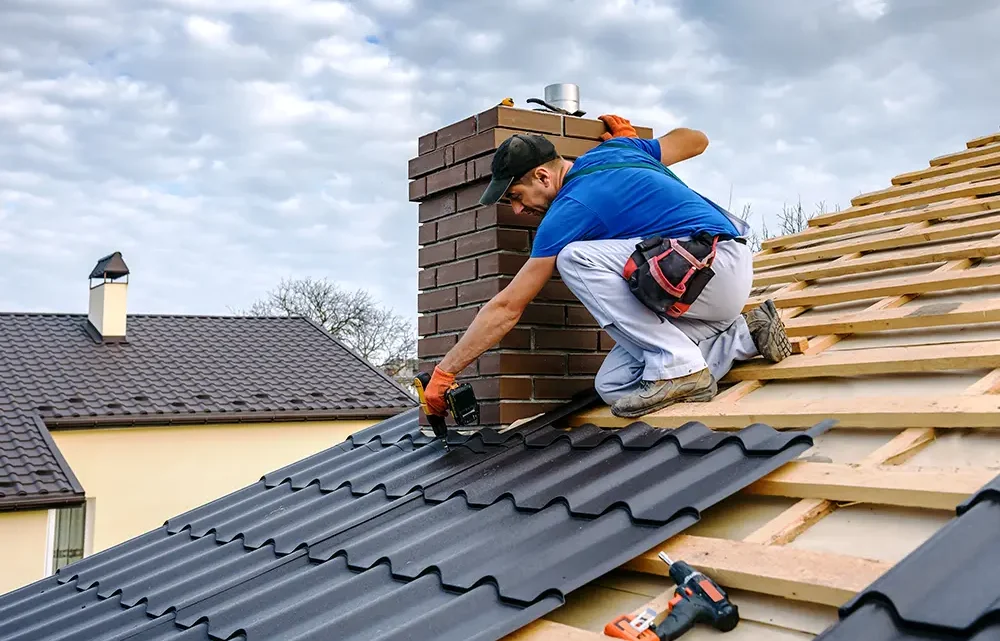Types of Roofing Design
January 17, 2025Roof styles can be aesthetics as well as functional features on any building – old or new – so think long and hard when you’re renovating a previous structure or building a new one. It could be anything from classic functionality-focused designs to more modern designs that are all about sustainability and efficiency, the options are endless.
Gable roofs are a very beautiful, traditional style that fits any home. And it snows really well because they are on a steep hill! Besides that, this style is an excellent option if you live in a place with a lot of snow because it has great precipitation control.
Gable Roofs
Gable roofs are one of the most common roof types in North America with two planes joining at a ridge line into triangles at both ends of a house.
A sloping roof will lend character to any style house from a New York ranch to a Midwest farmhouse. The style can also make stronger homes in climates where extreme weather is common, because it has high sides that melt snow and rain quickly.
Roofs that are gable-roofed can be embellished with brackets, pediments and other architectural details for more interest. But steep pitches can also accumulate snow, and this may need to be cleared from time to time, or the structure might get destroyed. In order to get a longer lasting, longer lasting roof such as these you need to regularly inspect it and maintain it; checking for the deterioration and scraping debris off and changing pitch.
Dome Roofs
Domed roof is one beautiful and unique architecture. You can find it in school buildings, civic buildings, churches; as well as home owners who want to build their house with the energy efficient and green designs.
It might seem a strange roofing option, but dome roofs are quick to install and relatively cheap in comparison with other types of roofs. Dome shapes are great for any applications that need a lot of natural light or space.
Perhaps the first to be built was the monolithic dome, an engineering achievement and a monument of power and prestige that was immediately admired and embraced by all. Ultra-rigid and able to survive the harshest weather, Geiger’s air-supported dome was another first in dome construction: concentric tension hoops linked by cables into a three-sided system that supported the structure side to side to ensure its long-term sustainability.
Jerkinhead Roofs
Jerkinhead roofs allow people who wish to go with a traditional look but something different to give their home an outstanding appearance. Jerkinheads can be a statement piece on Tudor, Craftsman, Queen Anne and Stick style houses, though more costly and complicated than other roof types.
This design, as its name implies, is built with two sloping sides that slope down towards a central ridge and two sloped ends whose tops are cut to reduce wind-damage risk – perfect for those areas where there is frequent, heavy rain.
Jerkinhead roofs have some very distinct advantages over gable roofs such as efficient snow/rain runoff and leak-prevention, because of their rafters and many peaks and valleys that make maintenance a challenge, but homeowners should be sure to hire roofers for this work.
Curved Roofs
It is a design feature on curving roofs that makes a home stand out and is also popular with architects and designers because they are a design feature that make your home stands out from all the rest.
These roofs can also be built without using trusses or columns to hold it up, making it faster and cheaper to build than the alternative.
Roof tiles suitable for curved roofs are asphalt shingles or concrete roof tiles but barrel tiles are the most common due to their round look and strength.
The other low-cost choice for curved roof design is metal roofs, which can be durable, strong and customizable for any building. Curved metal roofs have ridges, as well, that optimize water run-off and support the arched specifications of your project.




